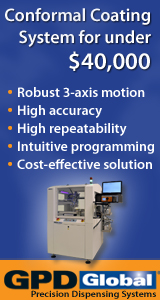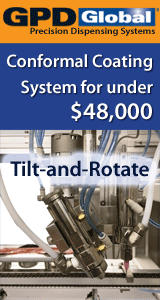Printed Circuit Board Assembly & PCB Design Forum
SMT electronics assembly manufacturing forum.
- SMTnet
- »
- Electronics Forum
- »
- What is a typical SMT placement defect rate?
What is a typical SMT placement defect rate?
Views: 7664
![]() I'm looking for a typical SMT placement defect rate from oth...
- Jul 09, 2014
by
DeanM
I'm looking for a typical SMT placement defect rate from oth...
- Jul 09, 2014
by
DeanM
![]()
![]()
![]() I think what you are asking for is called First Pass Yield a...
- Jul 10, 2014
by
Evtimov
I think what you are asking for is called First Pass Yield a...
- Jul 10, 2014
by
Evtimov
![]()
![]()
![]() Hi,
An answer to this question is very complex.
The amou...
- Jul 10, 2014
by
Alexei Shkolnik
Hi,
An answer to this question is very complex.
The amou...
- Jul 10, 2014
by
Alexei Shkolnik
![]()
![]()
![]() We're a Tier 1 Automotive Supplier building, what I like to ...
- Jul 16, 2014
by
A Very Frazzled Man
We're a Tier 1 Automotive Supplier building, what I like to ...
- Jul 16, 2014
by
A Very Frazzled Man
![]()
![]() Thank you for your comments so far. I believe I threw some p...
- Jul 16, 2014
by
DeanM
Thank you for your comments so far. I believe I threw some p...
- Jul 16, 2014
by
DeanM
![]()
![]()
![]() Hi,
If you can not rely on your programmer and the tools ...
- Jul 16, 2014
by
Alexei Shkolnik
Hi,
If you can not rely on your programmer and the tools ...
- Jul 16, 2014
by
Alexei Shkolnik
![]()
![]()
![]() > Hi,
>
> If you can not rely on your programmer...
- Jul 17, 2014
by
PRoy
> Hi,
>
> If you can not rely on your programmer...
- Jul 17, 2014
by
PRoy
![]()
![]()
![]() Hi,
If you are working in high mix low volume, your machi...
- Jul 18, 2014
by
Alexei Shkolnik
Hi,
If you are working in high mix low volume, your machi...
- Jul 18, 2014
by
Alexei Shkolnik
![]()
![]()
![]() As has been pointed out by other well experienced individual...
- Jul 21, 2014
by
JimmyB
As has been pointed out by other well experienced individual...
- Jul 21, 2014
by
JimmyB
![]()
![]()
![]() Our company has a process standard that requires a double pe...
- Sep 21, 2014
by
gascon5383
Our company has a process standard that requires a double pe...
- Sep 21, 2014
by
gascon5383
![]()
![]()
![]() In my office we strive for no retouch prior to reflow, it ca...
- Sep 27, 2014
by
Cyle H
In my office we strive for no retouch prior to reflow, it ca...
- Sep 27, 2014
by
Cyle H
![]()
![]()
![]() the data collected from a standard SMT process is typically ...
- Oct 02, 2014
by
arifa anees
the data collected from a standard SMT process is typically ...
- Oct 02, 2014
by
arifa anees
![]()
- SMTnet
- »
- Electronics Forum
- »
- What is a typical SMT placement defect rate?







